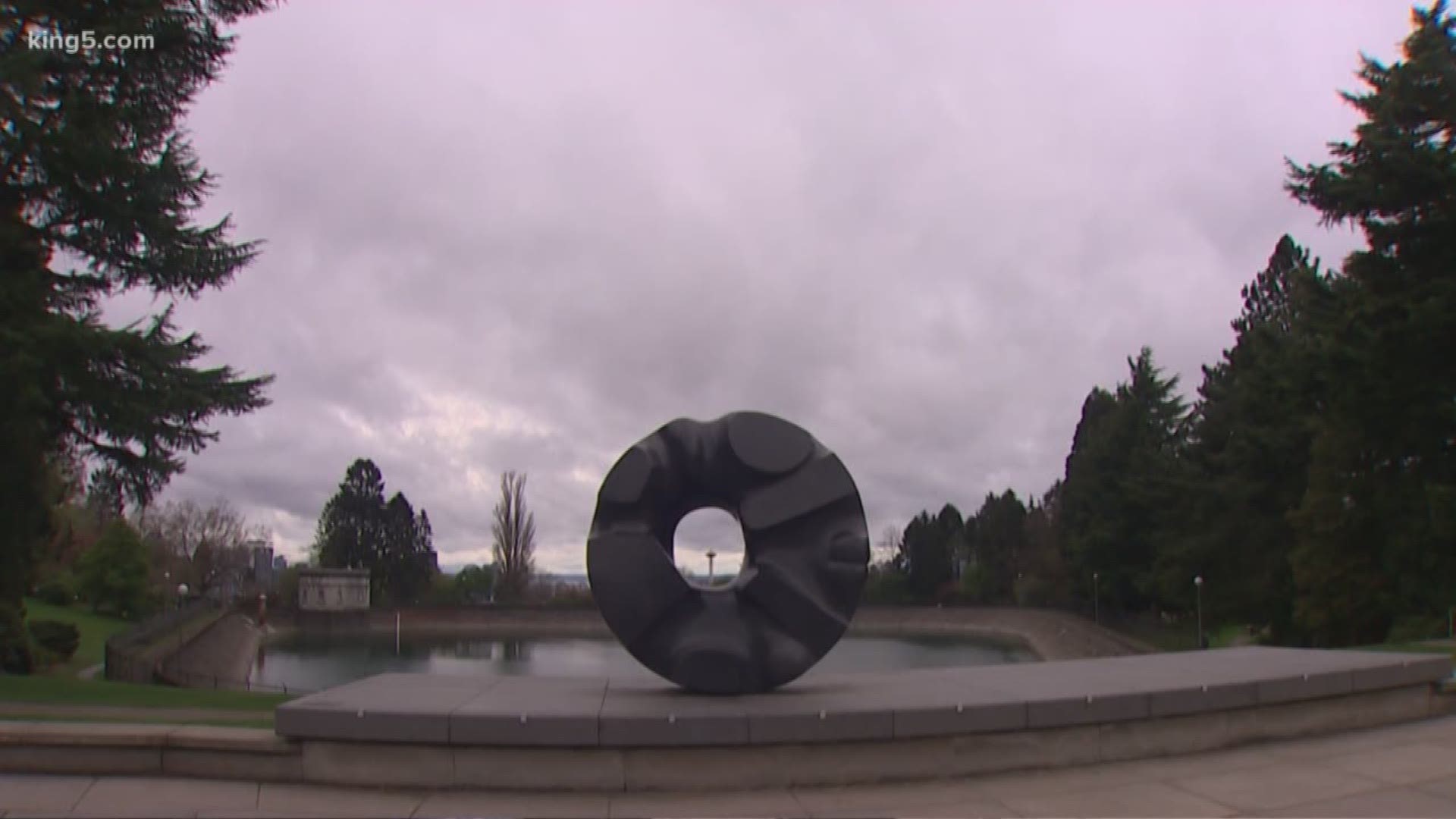SEATTLE — There’s a black hole in the heart of Seattle, one with a certain draw.
“I’m a runner, so normally running by instead of walking the dog, but yeah, almost every day,” said Suzanne Branon.
“Black Sun,” a sculpture by Isamu Noguchi, sits in Volunteer Park and brings to mind Soundgarden’s hit song “Black Hole Sun.” On Wednesday, the sculpture served as a place for people like Branon to reflect on a discovery 55 million light-years away.
“I didn’t know what a black hole looked like until today, except in the minds of sci-fi directors,” Branon said.
On Wednesday, scientists revealed the long-anticipated first image ever made of a black hole. The image was captured by the Event Horizon Telescope, an international cooperation that linked eight radio observatories to create a single, global telescope.
The image shows a dark circle ringed by light, a measurement of radiation, according to University of Washington Astronomy Professor Eric Agol.
“The exciting thing now is instead of a simulation we can see what nature is producing, the event horizon as produced by a physical black hole,” Agol said.
Agol now studies exoplanets, which are planets orbiting stars other than our sun, but spent a good portion of his career focused on black holes.
He's excited to see where the multi-site technology could go for his own work.
“If we could do that with optical light, light our eyes could see, we could possibly create an image of a world orbiting another star," Agol explained. "That would be awesome to see continents and oceans."
He said it’s tough to say right now what we will learn from the first image of a black hole, but it’s safe to say we will learn something.
“This could have implications for life as we know it in the universe,” Agol said. “The fact that science can go out and make these projections and go out and test them is the fundamental aspect that allows science to progress. I think that’s one really exciting thing.”
One of Agol’s former graduate students worked on the project. He said he hopes someday such research could help scientists rectify contradictions between conceptions of quantum mechanics and relativity.
“Lot of really smart people have worked on this problem and failed to reconcile these two things," Agol said.
He said inside a black hole is where these ideas collide, and where researchers could find answers to life’s big questions.
“A lot of times if you’re studying a question that hasn’t been answered, you don’t know if it can be answered, you don’t know if it will be answered, and that’s a really frustrating way to live,” Agol said. “So, to make progress like this is really exciting because it shows some questions can, in fact, be answered, like is there an event horizon to a black hole? Today we can say yes.”
That prospect excited Branon.
“Science is the only chance. New discoveries in astronomy or physics or whatever field it is is as close as we can get to understanding the magic,” Branon said. “Or maybe we’re not meant to understand. Maybe it’s better to have something beyond explanation – and a mystery to the universe. Yeah, beautiful.”

